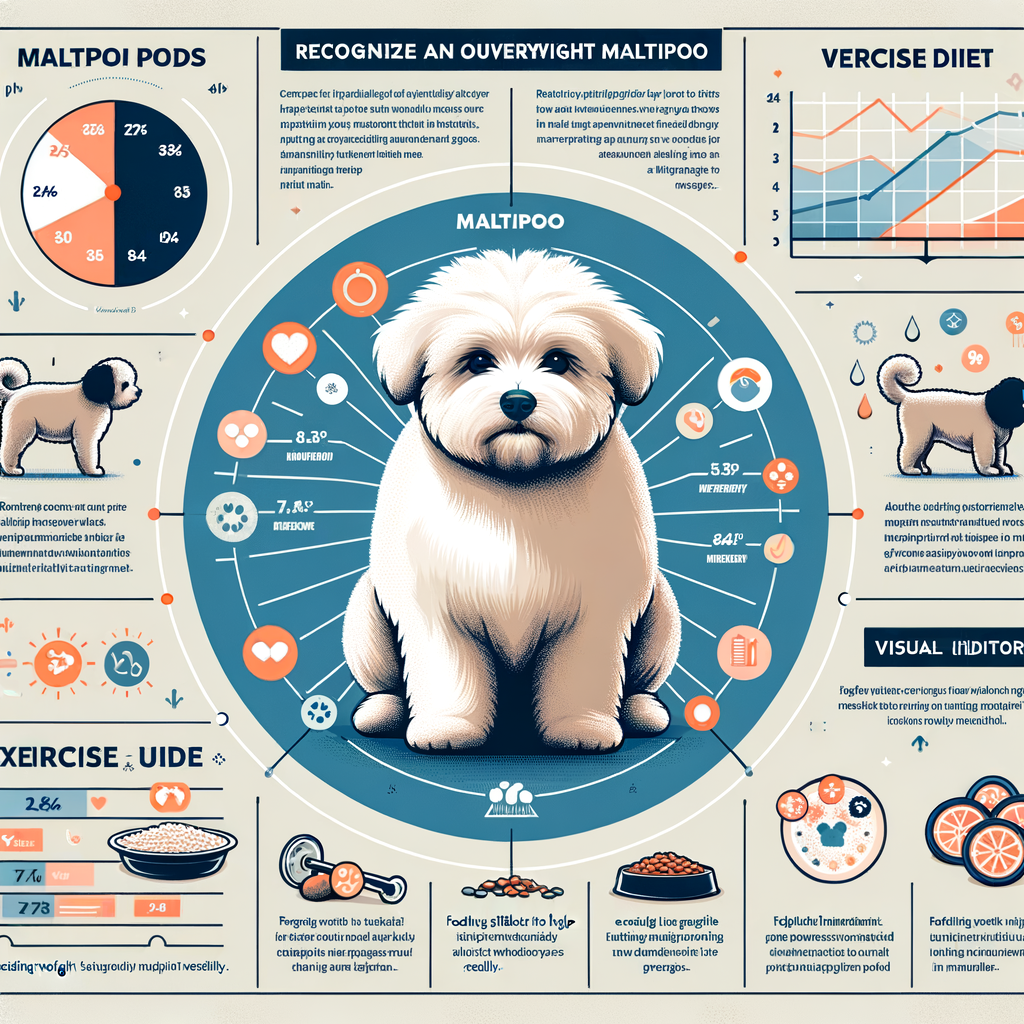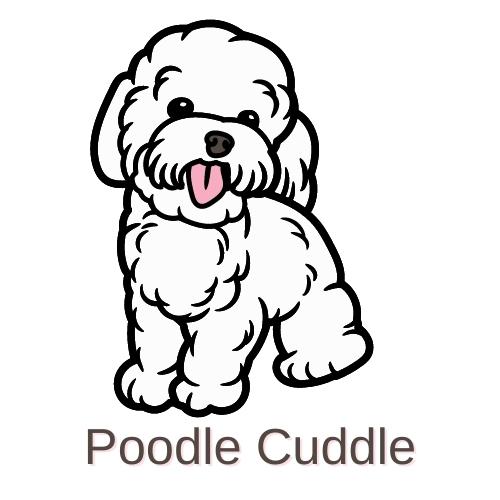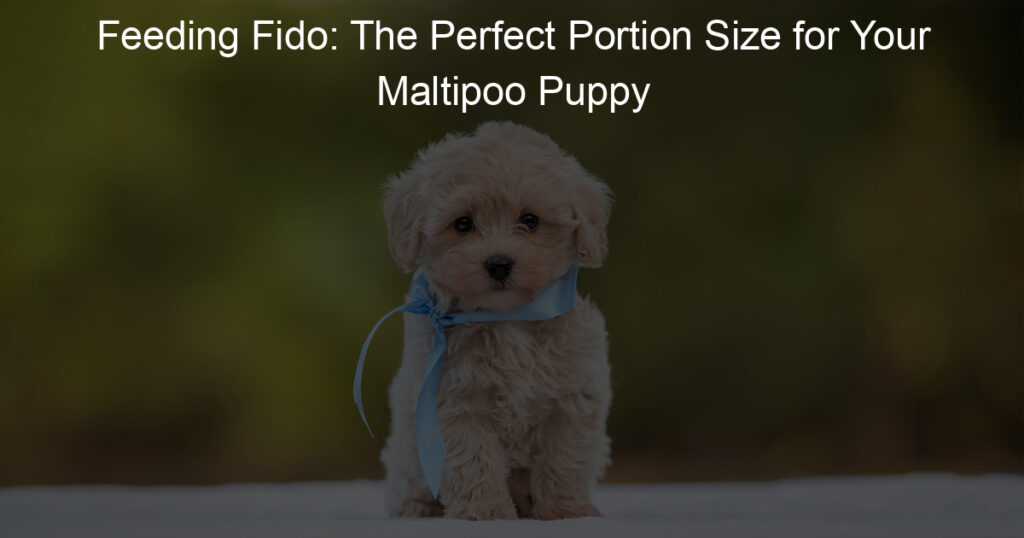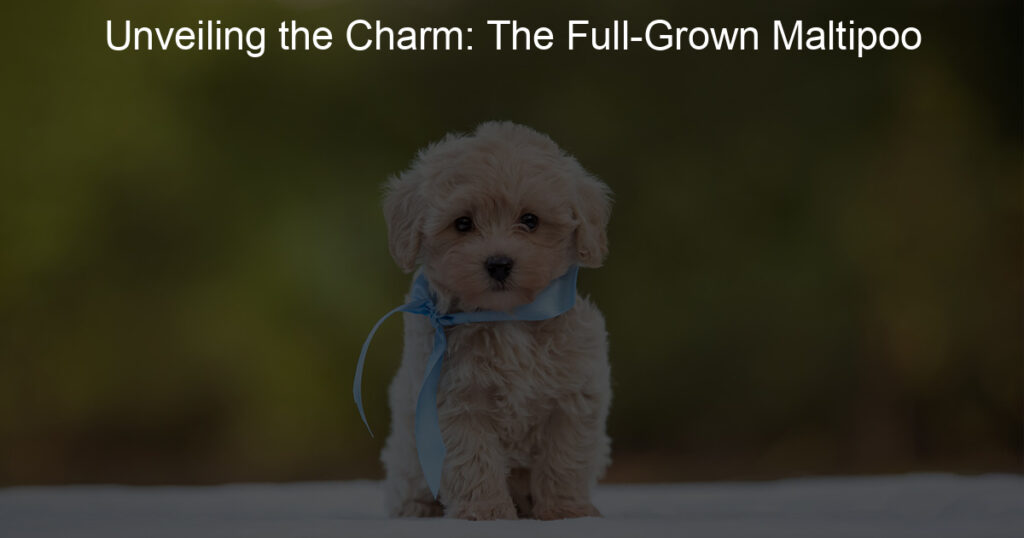
Introduction: The Importance of Maltipoo Weight Management
Weight management is an essential aspect of maintaining your Maltipoo’s health and happiness. Just like humans, dogs also need to maintain a healthy weight to live a long and healthy life. This blog post will delve into the importance of weight management for your Maltipoo.
- The role of weight in your Maltipoo’s overall health
- Understanding the risks of an Overweight Maltipoo
Weight plays a significant role in your Maltipoo’s overall health. A healthy weight can help prevent a variety of health issues, including heart disease, diabetes, and joint problems. It can also improve your pet’s quality of life by increasing their energy levels and reducing their risk of injury. On the other hand, being overweight can put unnecessary strain on your Maltipoo’s body, leading to a host of health problems.
Overweight Maltipoos face numerous health risks. Excess weight can lead to heart disease, diabetes, and arthritis. It can also cause breathing difficulties and lower your pet’s lifespan. Furthermore, overweight dogs may experience reduced mobility and a lower quality of life. Therefore, it’s crucial to monitor your Maltipoo’s weight and take steps to ensure they maintain a healthy weight.
In the following sections, we will discuss how to understand and identify weight issues in Maltipoos, how to address these issues, and share a successful case study of Maltipoo weight loss. We will conclude with tips on maintaining a healthy weight for your Maltipoo. Remember, your Maltipoo’s health is in your hands, and managing their weight is a key part of that responsibility.
Understanding Healthy Weight for Maltipoos
When it comes to the health of your Maltipoo, weight is a crucial factor. A healthy weight can contribute to a longer, happier life for your furry friend. Let’s delve into understanding what’s normal for Maltipoos.
Maltipoo Weight Chart: What’s Normal?
Just like humans, every Maltipoo is unique. Therefore, what’s considered a healthy weight can vary. However, a weight chart can provide a helpful guideline. Let’s break it down.
- Breaking down the Maltipoo weight chart
- How to interpret your Maltipoo’s weight
- Body Shape: From the side, your Maltipoo should have a noticeable waist. From above, the waist should be narrower than the chest and hips.
- Ribs: You should be able to feel your Maltipoo’s ribs easily, but they shouldn’t be visible.
- Energy Levels: A healthy Maltipoo should be active and playful. If your pup seems lethargic, it might be time for a vet visit.
A typical Maltipoo can weigh anywhere from 5 to 20 pounds, depending on factors like age, diet, and genetics. Here’s a simple chart to help you understand:
| Age | Weight Range |
|---|---|
| Puppy (0-6 months) | 2-5 pounds |
| Young Adult (6-12 months) | 5-10 pounds |
| Adult (1-8 years) | 10-20 pounds |
| Senior (8+ years) | 10-18 pounds |
Remember, these are just averages. Your Maltipoo might weigh more or less and still be perfectly healthy.
Understanding your Maltipoo’s weight isn’t just about numbers. It’s also about how they look and feel. Here’s what to look for:
If you’re ever unsure about your Maltipoo’s weight, it’s always a good idea to consult with a veterinarian. They can provide personalized advice based on your pet’s specific needs.
Factors Influencing Maltipoo Weight
Understanding the weight of your Maltipoo is crucial for their health. Several factors can influence their weight, including breed characteristics, age, and diet. Let’s delve into these factors.
- Breed Characteristics and Genetics
- Age and Activity Level
- Diet and Nutrition
The Maltipoo is a crossbreed of the Maltese and Poodle breeds. These breeds are generally small, which influences the Maltipoo’s size and weight. The genetics inherited from the parent breeds can significantly impact the weight of your Maltipoo. For instance, if the Poodle parent is of the smaller Toy or Miniature variety, your Maltipoo may lean towards a lighter weight range.
Like humans, dogs’ metabolism changes with age. Puppies tend to be more active and burn more calories, so they may weigh less than older, less active dogs. As your Maltipoo ages, their activity level may decrease, leading to potential weight gain. Regular exercise is crucial to keep your Maltipoo at a healthy weight.
What you feed your Maltipoo has a direct impact on their weight. A balanced diet rich in proteins, healthy fats, and essential nutrients is vital for maintaining a healthy weight. Overfeeding or providing foods high in sugar or unhealthy fats can lead to weight gain. It’s important to consult with a vet to determine the best diet for your Maltipoo’s age, size, and activity level.
In conclusion, understanding the factors influencing your Maltipoo’s weight can help you ensure they maintain a healthy weight. Regular vet check-ups, a balanced diet, and adequate exercise are key to your Maltipoo’s weight management.
Identifying Maltipoo Weight Issues
Understanding the signs of weight issues in your Maltipoo is crucial for their health and wellbeing. Let’s delve into the signs that might indicate your Maltipoo is overweight.
Signs Your Maltipoo May Be Overweight
There are two main categories of signs that your Maltipoo may be overweight: physical changes and symptoms, and behavioral changes.
- Physical changes and symptoms:
- Behavioral changes:
If your Maltipoo is gaining weight, you might notice that their body shape changes. They may lose the definition of their waist, and their belly may appear rounded. Other physical symptoms can include difficulty in walking or running, shortness of breath, and a noticeable increase in their overall size. It’s important to regularly check your Maltipoo’s weight and body condition to catch any weight gain early.
Behavioral changes can also indicate that your Maltipoo is overweight. They might become less active, show signs of fatigue more quickly, or seem less interested in play. An overweight Maltipoo might also show changes in their eating habits, such as eating more quickly or begging for food more often. Remember, these changes can also be signs of other health issues, so it’s important to consult your vet if you notice any significant behavioral changes.
Identifying weight issues in your Maltipoo early is key to preventing more serious health problems. If you notice any of these signs, it’s important to consult your vet and discuss a weight management plan for your pet.
When to Consult a Vet
As a responsible Maltipoo owner, it’s crucial to know when to seek professional help for your pet’s weight issues. Here are a couple of key situations:
- Recognizing serious weight-related health issues
- The role of professional advice in Maltipoo weight management
Weight issues in Maltipoos can lead to serious health problems, such as diabetes, heart disease, and joint issues. If you notice any unusual symptoms like excessive thirst, difficulty breathing, or decreased activity, it’s time to consult a vet. These could be signs of a serious weight-related health issue.
Even if your Maltipoo doesn’t show any immediate signs of weight-related health issues, regular vet consultations are essential. A professional can provide tailored advice on diet, exercise, and overall weight management for your Maltipoo. They can also monitor your pet’s weight and help prevent potential health issues.
Remember, early detection of weight issues can significantly improve your Maltipoo’s health and quality of life. Don’t hesitate to seek professional advice when it comes to your pet’s weight management.
Addressing Maltipoo Weight Issues
Weight management is a crucial aspect of your Maltipoo’s health. If your furry friend is overweight, it’s essential to address the issue promptly to prevent health complications. Here, we’ll focus on the diet aspect of weight management for Maltipoos.
Maltipoo Diet: What to Feed an Overweight Maltipoo
Feeding your Maltipoo the right food and in the correct proportions can significantly help in weight loss. Here are some key points to consider:
- Understanding the nutritional needs of a Maltipoo
- Choosing the right food for weight loss
- Maltipoo feeding guide: portion sizes and meal frequency
Maltipoos, like all dogs, require a balanced diet to stay healthy. This includes proteins for muscle development, carbohydrates for energy, and fats for a shiny coat. However, an overweight Maltipoo may need a diet lower in fats and higher in fiber to aid in weight loss.
When it comes to weight loss, the quality of food matters. Choose dog food that’s high in protein and fiber but low in fats. Avoid foods with added sugars or fillers, as they can contribute to weight gain. Your vet can help you choose the best diet for your Maltipoo’s weight loss journey.
Overfeeding is a common cause of weight gain in dogs. It’s crucial to feed your Maltipoo the right portion sizes. A general rule of thumb is to feed adult Maltipoos 1/4 to 1/2 cup of dry food per meal, twice a day. However, this can vary based on your dog’s age, size, and activity level. Consult your vet for personalized feeding guidelines.
Remember, weight loss in dogs should be gradual. Rapid weight loss can lead to other health issues. Always consult your vet before making significant changes to your Maltipoo’s diet.
Maltipoo Exercise Routine: Keeping Your Maltipoo Active
Exercise is a vital part of any dog’s life, and Maltipoos are no exception. Regular physical activity can help maintain a healthy weight, improve mental health, and extend their lifespan. In this section, we will explore the benefits of regular exercise for Maltipoos and provide some recommended exercises to keep your furry friend active and healthy.
- Benefits of Regular Exercise for Maltipoos
- Weight Management: Regular exercise helps burn calories, which can prevent obesity and related health issues.
- Mental Stimulation: Physical activity also provides mental stimulation, which can help prevent boredom and destructive behavior.
- Improved Health: Regular exercise can help strengthen the immune system, improve cardiovascular health, and increase overall lifespan.
- Better Behavior: A well-exercised Maltipoo is a well-behaved Maltipoo. Regular exercise can help reduce behavioral problems such as excessive barking, digging, or chewing.
- Recommended Exercises for Maltipoos
- Walking: A daily walk is a great way for your Maltipoo to burn off energy. Aim for at least 30 minutes to an hour of walking each day.
- Fetch: Playing fetch is a fun way to provide both physical and mental stimulation for your Maltipoo.
- Agility Training: Maltipoos are intelligent and agile dogs that can excel at agility training. This can be a fun and challenging way to exercise your Maltipoo.
- Swimming: If your Maltipoo enjoys water, swimming can be a great low-impact exercise. Always supervise your Maltipoo while swimming to ensure safety.
Regular exercise offers numerous benefits for your Maltipoo. Here are some key points to consider:
Maltipoos are energetic and playful dogs that love to be active. Here are some recommended exercises that can help keep your Maltipoo fit and healthy:
Remember, every dog is unique, and what works best for one Maltipoo may not work for another. Always monitor your Maltipoo during exercise to ensure they are not overexerting themselves and consult with your vet to determine the best exercise routine for your pet.
Case Study: Successful Maltipoo Weight Loss
Let’s take a closer look at a real-life example of a Maltipoo who successfully achieved a healthy weight. This case study will provide valuable insights into how to manage your Maltipoo’s weight effectively.
- Background: Identifying the problem
- Strategy: Implementing diet and exercise changes
- Outcome: Achieving a healthy weight
Meet Bella, a 3-year-old Maltipoo who weighed 15 pounds, 5 pounds over the average weight for her breed. Bella’s owner noticed she was less active, had difficulty breathing, and struggled to climb stairs. A visit to the vet confirmed that Bella was overweight, putting her at risk for serious health problems like heart disease and arthritis.
Bella’s owner, with guidance from the vet, decided to implement changes in Bella’s lifestyle. They switched Bella to a specially formulated low-calorie dog food and reduced the number of treats given. They also increased Bella’s physical activity by taking her for longer walks and encouraging playtime. Bella’s owner made sure to monitor Bella’s progress closely, making adjustments as needed.
After six months of consistent diet and exercise changes, Bella lost the extra weight. She now weighs a healthy 10 pounds and is more active and energetic. Her breathing has improved, and she can easily climb stairs. Bella’s successful weight loss journey shows the importance of a balanced diet and regular exercise in maintaining a healthy weight for Maltipoos.
| Age of Maltipoo | Initial Weight | Target Weight | Time to Achieve Target Weight |
|---|---|---|---|
| 3 years | 15 pounds | 10 pounds | 6 months |
In conclusion, Bella’s story is a testament to the power of a balanced diet and regular exercise. It’s crucial to monitor your Maltipoo’s weight and take action if you notice any weight gain. Remember, a healthy Maltipoo is a happy Maltipoo!
Conclusion: Maintaining a Healthy Weight for Your Maltipoo
As we reach the end of our discussion on Maltipoo weight management, it’s important to remember that maintaining a healthy weight for your furry friend is not a one-time task. It requires consistent effort, regular checks, and a balanced diet. Let’s recap the key points we’ve covered.
- Key takeaways for Maltipoo weight management
- Importance of regular weight checks
Firstly, understanding what a healthy weight for your Maltipoo looks like is crucial. This depends on factors like age, size, and overall health. Secondly, identifying weight issues early can prevent serious health problems. Look out for signs like lethargy, difficulty in moving, and changes in eating habits. Lastly, addressing weight issues involves a combination of diet control, regular exercise, and sometimes, medical intervention.
Regular weight checks are vital in keeping your Maltipoo at a healthy weight. These checks help you monitor your pet’s weight and take action if any sudden weight gain or loss is noticed. Remember, prevention is better than cure. Regular weight checks can help you catch weight issues early before they escalate into more serious health problems.
In conclusion, your Maltipoo’s weight management is an integral part of their overall health and well-being. By understanding what a healthy weight looks like, identifying weight issues early, and addressing them promptly, you can ensure your Maltipoo lives a long, happy, and healthy life.
Remember, every Maltipoo is unique. What works for one might not work for another. Always consult with your vet before making any major changes to your Maltipoo’s diet or exercise routine.
Here’s to a healthy and happy life for your Maltipoo!








